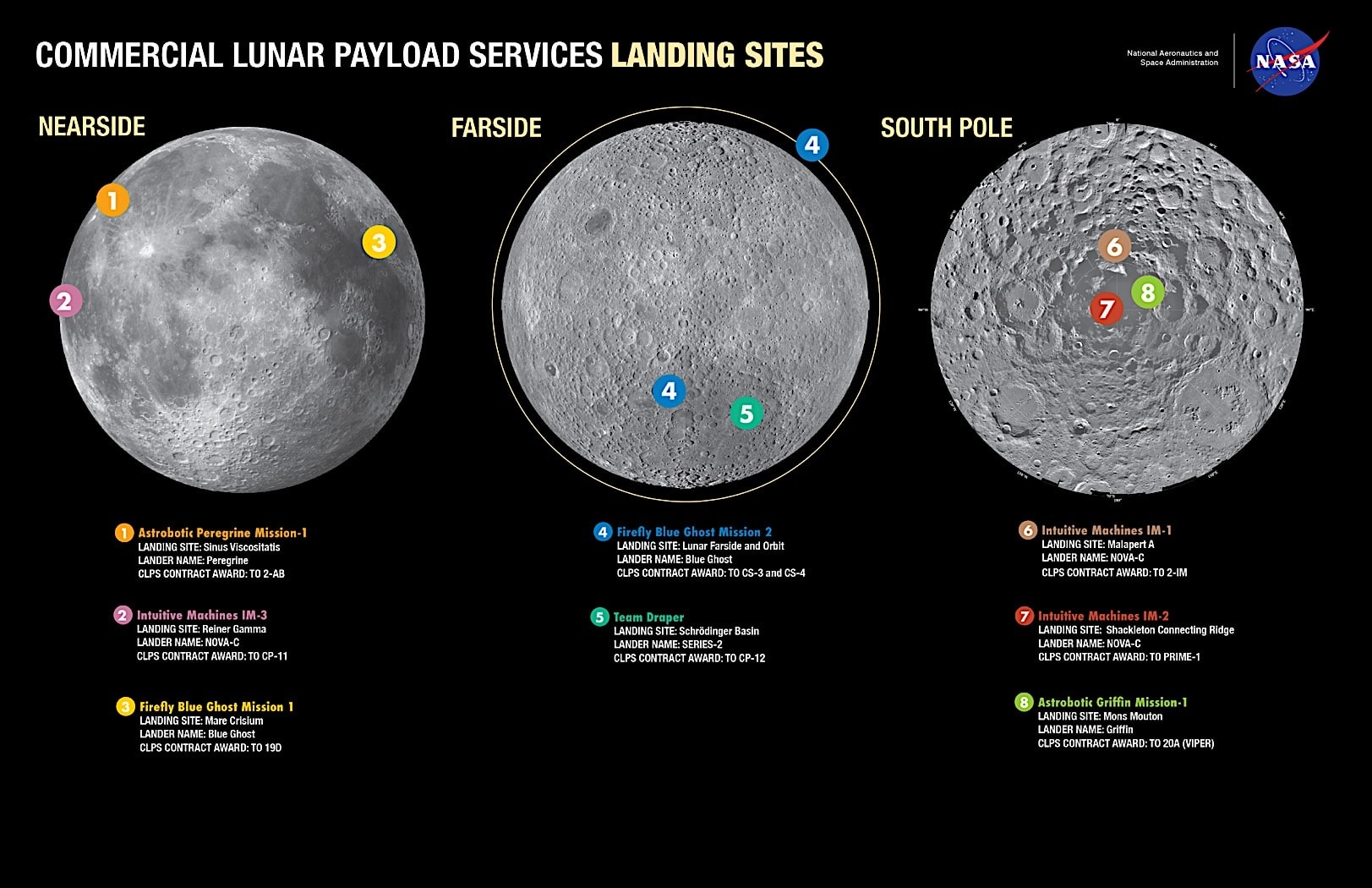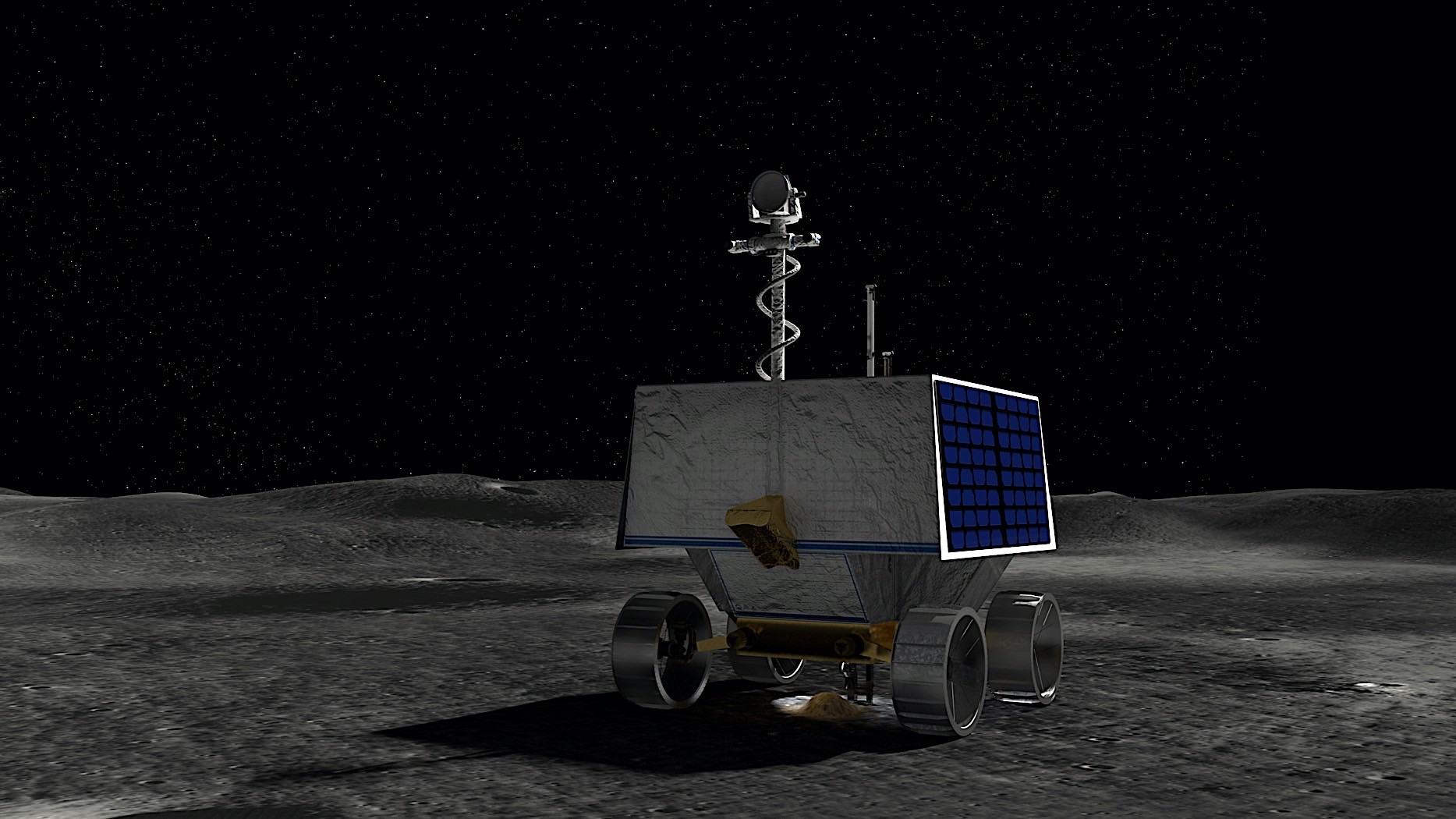Our solar system is a treasure trove of resources essential for expanding human presence in space, yet their exact locations remain elusive. While the Moon is currently the prime target for resource prospecting, the recent cancellation of NASA’s VIPER rover mission underscores the challenges of this endeavor.
Undeterred, NASA is shifting its focus to a stationary mining machine named PRIME-1, equipped with a drill and mass spectrometer. This device, set to launch on a Falcon 9 rocket and land on the Moon via Intuitive Machines’ Nova-C lander, will start on a crucial mission to search for water ice at the lunar South Pole.

Intuitive Machines, in collaboration with NASA, has pinpointed a promising landing site for its Nova-C lander and PRIME-1 payload. This elliptical region, measuring 200 meters in diameter, is situated on the Shackleton Connecting Ridge, a strategic location at the Moon’s South Pole linking three significant craters.
Selected for its favorable terrain, direct communication with Earth, optimal solar exposure for energy generation, and high probability of subsurface ice within one meter, this site maximizes the chances of scientific discovery. The Nova-C, incapable of independent movement, necessitates a meticulously chosen landing spot to ensure mission success.
The IM-2 mission, carrying the lander and payload, is scheduled to launch between November 2024 and January 2025, with a targeted departure later this year. This endeavor is part of NASA’s Commercial Lunar Payload Services program, which leverages private industry to accelerate lunar exploration goals.

